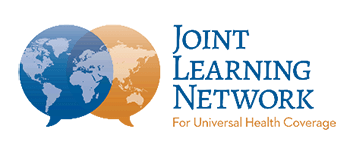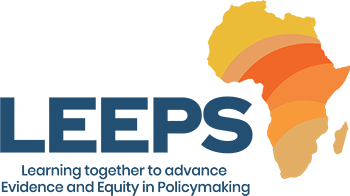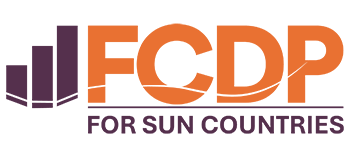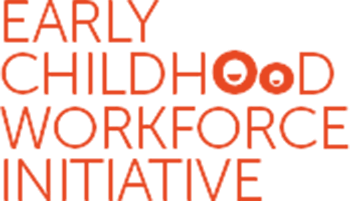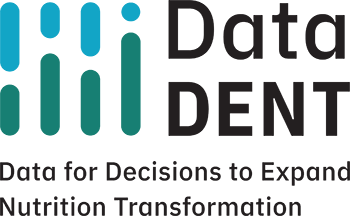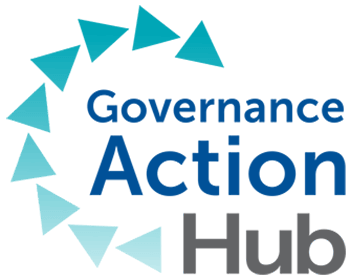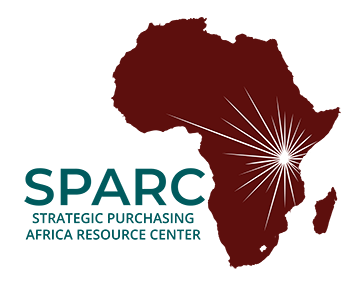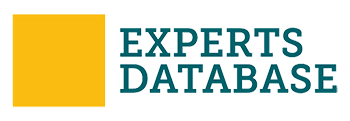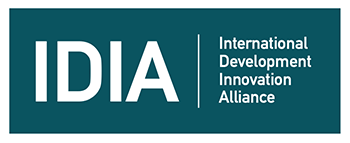Sustainable Financing: How to support country change agents in getting the resources they need
Domestic Resource Mobilization
[Editor’s Note: This is the second post from members of R4D’s Sustainable Financing Community of Practice. In their first post, “Calling all sustainable financing experts! Let’s learn from each other to find a common language and framework,” they introduced a common framework for talking about sustainable financing, regardless of sector. It’s their hope that the health, education and nutrition (and other) sectors will benefit from finding a common way of thinking and talking about sustainable financing so that we can all leverage learnings about what has or hasn’t worked — and create enduring change in the process. This blog takes a closer look at one part of that framework, domestic resource mobilization, and how the international development community can better support change agents with this.]
Domestic financing is essential to sustainable financing for social sector programs over the long term, particularly with uncertain and often diminishing donor funding flows. While resource needs and potential sources vary by sector, country and subnational contexts, we find that many of the broad principles for how to approach domestic financing are the same, for instance, relying on publicly-raised revenue as the backbone of sustainable financing, or supporting alignment of funding requests to the macro fiscal and public financial management realities of a country.
However, the process of how the global development community can support countries in reaching their sustainable financing goals is equally important to the technical principles that underlie them.
Here are a few ways we can support local change agents to ensure the prioritized, sustainable and coordinated mobilization of resources:
Improve financing dialogue between key stakeholders
Identifying and quantifying needs is a crucial part of resource mobilization — you have to know what it is that you’re asking for and why you need it — but equally essential is being able to translate those needs into a value for someone else. Whether it’s asking for one-time contributions, long-term financial support or in-kind donations and material goods, local change agents have to make a convincing investment case to potential funders. To be persuasive, however, you have to cut out the jargon and speak in terms that everyone can understand. This means health/education and finance authorities need to talk to each other early and often — to identify inefficiencies, align financing priorities with a government’s broader goals, and engage the private sector.
To help understand why ministries of health and finance are often at odds with each other, the USAID Health Finance and Governance (HFG) Project’s Getting Health’s Slice of the Pie initiative convened several ministry of finance and ministry of health officials to discuss health financing. Ministries of health were frustrated by insufficient budget allocations while ministries of finance struggled to justify increased health funding without having evidence of impact. Breaking out of the traditional economic or health jargon that each side was accustomed to allowed both sides to find common ground and have meaningful discussions towards shared goals. Working together, they found shared objectives, understood the other’s perspective, and began speaking a common language making the budget allocation discussion a less daunting and contentious task.
To help structure these kinds of inter-agency conversations, R4D worked with the World Health Organization to develop a process guide to identify practical misalignment issues between public financial management and health financing systems in country, for instance, where budget ceilings do not reflect sectoral commitments, or where the budget is aligned to line items like drugs or salaries instead of service outputs or performance. This guide has also recently been adapted to identify specific PFM issues that may arise during donor transition, with an eye toward HIV/AIDS, malaria and tuberculosis.
Support local change agents to drive and prioritize resource mobilization activities
While global priority setting often sets the tone for resource allocation broadly, the global development community should focus support at the local level to ensure that change agents can identify their own priorities and steward resource mobilization activities towards their strategic objectives. There is no single way to mobilize domestic resources, which requires different levels of political will and expertise to set up, implement and monitor.
A key consideration is that there are many different actors at country level who need to be engaged and aligned — including ministries of health, education, finance or local level decision makers. For instance, a recent R4D/WHO study examining global earmarking practices in six countries identified that earmarks were successfully adopted when the health and finance authorities were able to align their objectives. The study engaged country representatives through both a questionnaire and practical learning exchange to home in on the key factors that impacted implementation, which led to the development of a practical checklist of considerations for health and finance policymakers to consider before adopting earmarks for health. While nearly all of the finance authorities in the focus countries said that earmarking is generally not a preferred policy due to the inflexibility it introduces into the budgeting and planning process, they saw the value of working with health authorities to develop and adopt earmarking practices given the high national priority of this sector.
In some cases, dedicating new revenue to a popular health initiative has made a tax increase that was desired by finance authorities politically acceptable, creating a win for both health and finance. In Ghana, attempts by the Ministry of Finance to increase the value-added tax (VAT) were politically unpopular until that increase was tied to funding the National Health Insurance Scheme. The government built public support for a VAT increase on a platform of removing the old “cash-and-carry” health system, which was funded largely through out-of-pocket payments.
Local level decision-makers can also play an important role in domestic financing. In Guinea, under USAID’s flagship Maternal and Child Survival Program, R4D has worked directly with district health teams to facilitate a process in which they can proactively lead resource mobilization efforts themselves rather than passively accepting offered resources. In the wake of Ebola, material and financial resources flooded into the country from donors and partners worldwide. What came in, however, was not necessarily what the local health system and facilities needed. As the health system continues to recover and rebuild, these district health managers have used the Comprehensive Approach to Health System Management to identify their own local priorities, assess their needs, and effectively engage stakeholders to mobilize resources. As a result, 20 district teams in the four regions hit hardest by the Ebola epidemic have determined where existing public resources should be focused, what requests can be made from existing partners, and which new potential partners at the local level (such as NGOs or even mining companies) can be engaged to contribute to their health objectives through either financial or in-kind support.
Support global and regional advocacy efforts to unlock funding
Resource mobilization can often involve working to generate evidence around what investments are needed as a way to support advocacy efforts to increase funding. For example, malnutrition is an underlying cause of nearly half of all infant deaths and there are proven interventions that could generate a high return on investment, but donors and countries spend, on average, well below 1 percent of their budgets on nutrition.
To change that, in 2016, the World Bank, R4D and 1,000 Days generated the first-ever Global Investment Framework for Nutrition, which estimated the cost to scale up a package of lifesaving nutrition-specific interventions to achieve the World Health Assembly targets for stunting, wasting, anemia and exclusive breastfeeding. This analysis produced a nutrition resource mobilization roadmap that has been used by advocacy organizations and donors to push the nutrition agenda forward. Most recently, at the Global Nutrition Summit in November 2017, $3.4 billion was committed to tackle global malnutrition. This global effort is a huge step in unlocking the funding needed for the nutrition sector.
Similarly, R4D examined the global state-of-play in early childhood development financing in 2016. This analysis revealed that critical early childhood development services are grossly underfunded, with countries allocating less than 0.1 percent of GDP to these programs. The analysis served as a clarion call for the need for greater investment. Through multiple efforts, including those of the Education Commission, the newly formed Early Childhood Development Action Network, and the Global Partnership for Education’s replenishment drive, the prospects for increased funding of early childhood services are stronger than ever.
Identifying needs, generating support and successfully mobilizing resources is a large task in and of itself, but it’s only just the beginning of ensuring sustainable financing. Once you have the resources, how do you use them most efficiently and continue to demonstrate value so that they keep them coming in? Stay tuned for more as our sustainable financing blog series continues!
Photo © Lane Goodman/R4D


